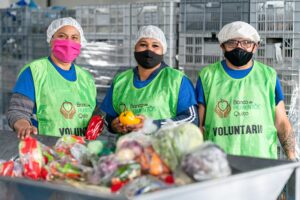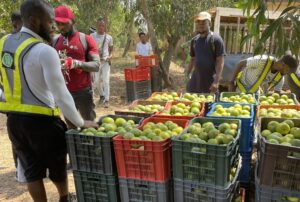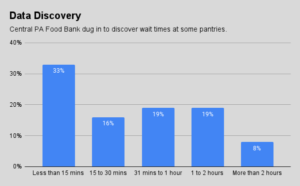Good Shepherd Food Bank of Maine has joined three other food banks around the country that are making their websites more inclusive via a toolbar that eliminates barriers to content.
The Recite Me toolbar expands accessibility to anyone coming to a website by adding features that compensate for all kinds of language barriers and disabilities. It supports a variety of actions, such as adjusting font sizes, using color-blind-friendly palettes, and translating content to 100 languages, from Afrikaans, to Scots Gaelic, to Filipino.
According to Recite Me, which has offices in the U.K., U.S. and Australia, more than one billion people worldwide encounter barriers when trying to read or understand content online. CEO Ross Linnett founded the company when his dyslexia made it difficult to access online information.
Making it easier for everyone to access web information can reduce the legal risks of not meeting web accessibility laws under the Americans with Disabilities Act. Just as important for Good Shepherd is the ability to fulfill its equity and inclusion goals by making its services broadly available to all.
“It is so important for the food bank to increase access to the nutritious food that people need,” said Jessica Donahue, Director of Marketing and Communications. So far, the tool is mainly being used for translations, she noted.
Around the world, the Recite Me toolbar has been launched over 3.4 million times, and in 2021 performed 14.8 million translations, according to Craig Repasky, Marketing Executive. In addition to Good Shepherd, food banks in the U.S. using the toolbar include Greater Baton Rouge Food Bank, Rhode Island Community Food Bank and Loaves and Fishes of Charlotte, N.C., he said.
An especially useful feature of the toolbar is its ability to support both text and audio. The toolbar can create downloadable mp3 audio files of content, and also translate uploaded PDF files into audio. In addition, a text-to-speech function is available in 35 languages.
“We do a lot of one-pager guides, like how to cook fish or gluten-free food,” which now can be translated into audio instructions, Donahue explained. The feature also comes in handy when doctor’s offices supply patients with a list of pantry resources. “They can go onto our website and translate it into whatever language they need,” Donahue said. “So they’re able to really cater all of that information to the person that they’re working with, which is amazing.”
Users get to the toolbar by clicking an “Accessibility & Language” option at the top of the site. There’s no need to download anything for it to work; everything is hosted within the website. Pricing varies according to the size of the organization and whether it’s commercial or non-profit. For Good Shepherd, it was a “no-brainer” to include the toolbar in the budget, Donahue said.
To let more people know about the feature, the food bank put out a press release and also held a town hall with all of its 600 partner organizations to introduce the tool and show how it works.
Donahue found out about the tool through a promotional email that she almost deleted. But then she became curious. “I was saying ‘Oh, I actually want this one, this is so cool.’” — Mariel Lozada
Mariel Lozada is a Venezuelan journalist living in New York City, focusing on health, gender and immigration issues. She has an M.A. in Engagement Journalism from CUNY and works as the Spanish Assistant Editor for the Global Investigative Journalism Network.
Like what you’re reading?
Support Food Bank News








